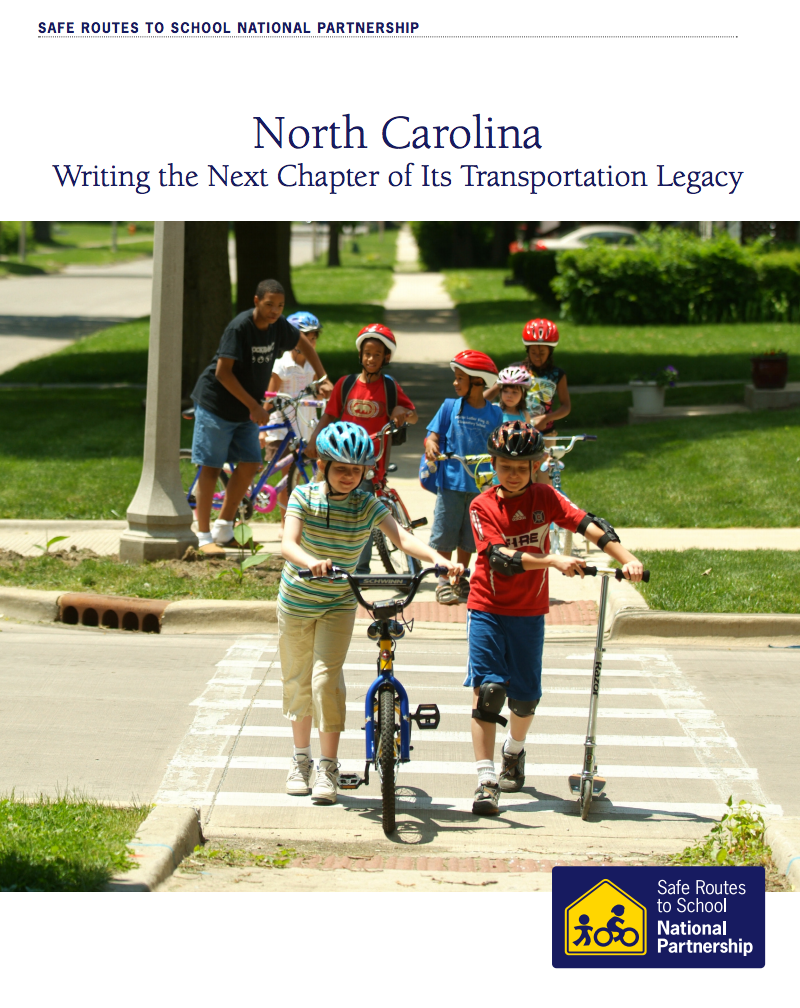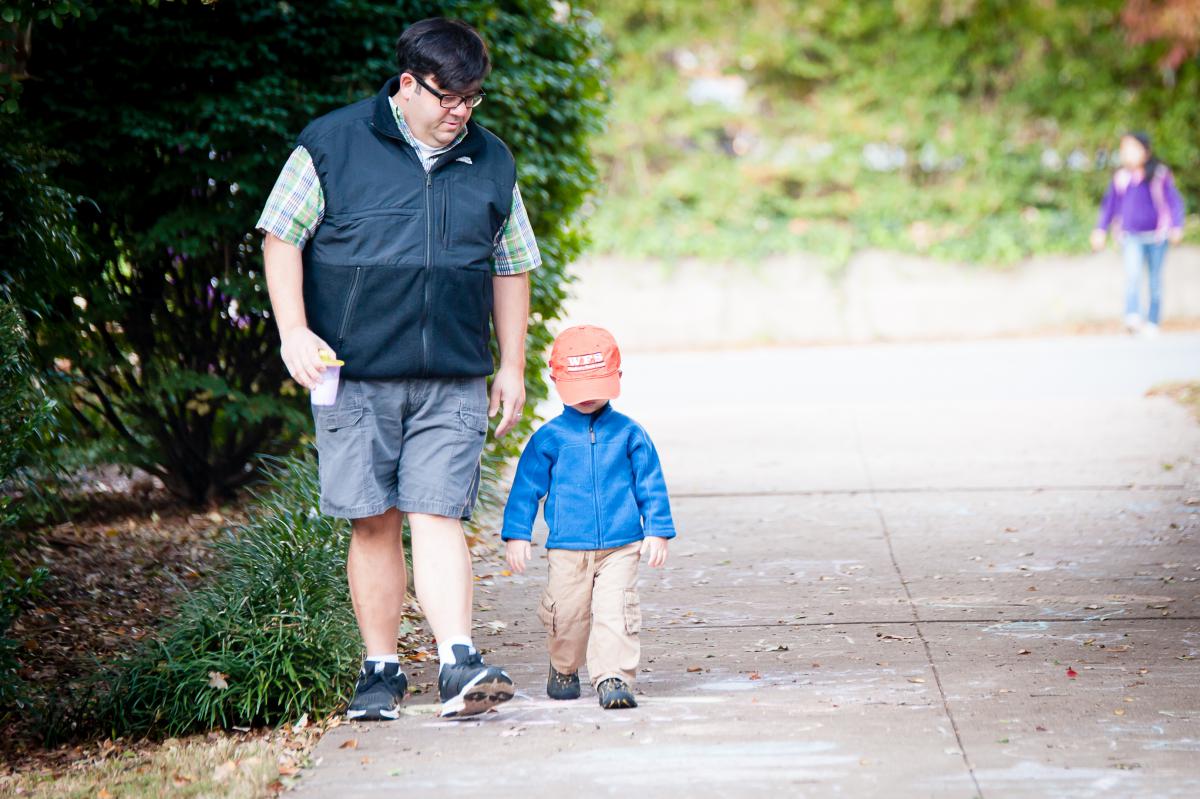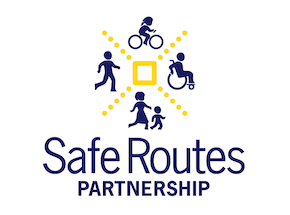 This month many children are heading back to school. Like many children and parents at this time of year, I am excitedly nervous -- excited about the beginning of a new school year, and slightly nervous about the challenges that lie ahead.
This month many children are heading back to school. Like many children and parents at this time of year, I am excitedly nervous -- excited about the beginning of a new school year, and slightly nervous about the challenges that lie ahead.
Resource Library
This document provides guidance for implementing and evaluating Complete Streets.
 When I came to the Safe Routes Partnership more than a year and a half ago, I was encouraged by our founder Deb Hubsmith to do two things. First, find every way to raise the drum beat of equity in my work, and second, read profusely to gain best practices and tactics to push progress forward.
When I came to the Safe Routes Partnership more than a year and a half ago, I was encouraged by our founder Deb Hubsmith to do two things. First, find every way to raise the drum beat of equity in my work, and second, read profusely to gain best practices and tactics to push progress forward.
Each state DOT is required to develop a data-driven Strategic Highway Safety Plan for programming their Highway Safety Improvement fund. Some of this funding can be spent on bicycle and pedestrian safety for school children.
 This week, the Safe Routes Partnership published a new report, “North Carolina: Writing the Next Chapter of Its Transportation Legacy." The report is being released as the newest NC General Assembly convenes in R
This week, the Safe Routes Partnership published a new report, “North Carolina: Writing the Next Chapter of Its Transportation Legacy." The report is being released as the newest NC General Assembly convenes in R
This toolkit shares what lessons learnedfrom successful joint use agreements, offeringguidelines and templates for othercommunities looking to expand their accessto school recreational facilities.
The Safe Routes Partnership is pleased to support the For Every Kid Coalition in the Pacific Northwest region. For Every Kid is a growing coalition calling for Safe Routes to School for every kid in the Metro-area; vocal support from cities and school districts is an outcome of key partners coming together to promote the benefits and work with communities and we have been an active part of the leadership of this effort.
Local leaders agree: creating safe options to walk, bike, or ride the bus to school is critical to improving the health of kids.
This report summarizes discussion from the convening series "Unlocking the Playground: Achieving Equity in Physical activity Spaces" in four locations in CA in 2009.
 If you have been following our federal transportation updates for a while, this update may sound a bit like Groundhog’s Day. Yet again, Congress has voted to extend the MAP-21 transportation law and yet again, lack of funding is the culprit.
If you have been following our federal transportation updates for a while, this update may sound a bit like Groundhog’s Day. Yet again, Congress has voted to extend the MAP-21 transportation law and yet again, lack of funding is the culprit.
The calculator is fully customizable to local school districts and contexts
 This summer has been a busy one for transportation. In addition to the late June committee consideration of the DRIVE Act, both the House and Senate are moving forward on transportation.
This summer has been a busy one for transportation. In addition to the late June committee consideration of the DRIVE Act, both the House and Senate are moving forward on transportation.
This website describes the initiatives of the Schools Uniting Neighborhoods (SUN) System, which supports joint use in an urban setting.
While members of Congress have been back in their districts meeting with constituents, House transportation committee staff has been huddled in Washington working on a transportation bill. You may recall that in July, the Senate completed action on its version of the transportation bill but the House instead pushed to extend current transportation law a few more months.
This guide provides information about LEED-ND (Leadership in Energy and Environmental Design for Neighborhood Development) standards and how they can support neighborhood sustainability.
Bayard Rustin, the orchestrator behind the scenes of what we hail today as the civil rights movement, once said, “We need in every bay and community a group of angelic troublemakers.” Today, I bore witness to one of those angelic troublemakers by the name of Olatunji (Oboi) Reed, Co-Founder of Slow Roll Chicago, as he was recognized by the U.S. Department of Transportation as a 2015 White House Transportation Champion of Change.
This study measures the impact of a walking school bus program on active transportation in an urban, low-income elementary school.

To increase physical activity opportunities available through schools over the long term, we need to put it in writing – through policy.
This document provides information about the methodology and a user guide for WHO's tool for economic assessment of the health effects of walking and cycling.
The Alliance for Biking and Walking recently released its 2016 Benchmarking Report, a biennial update on walking and biking across the United States intended to promote access to data, measure progress, support policy and advocacy efforts, and connect to health initiatives. More than half of member organizations in the Alliance for Biking and Walking are involved in Safe Routes to School efforts.
While we could only give one Hubsmith award, we were impressed by all of the dedicated individuals who were nominated for an award. We’ll be profiling each of the nominees over the next few months and look forward to lifting up great work from all around the country.

